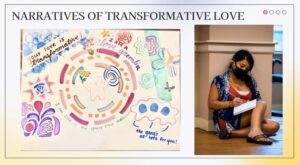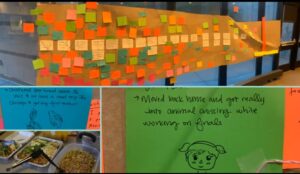
In the United States, many cultures coexist on a daily basis, which is why many caregivers have taken action on their own initiative to care for and protect different communities. These caregivers have implemented different ways of being heard through innovative projects.
The United States is a country with a large number of migrants, according to the census estimates, are more than 45 million people, 13.6 percent of the nation's population. In 2021, it was estimated that 10.7 million Mexican immigrants lived in the U.S., however, there was also an increase in immigration from other countries such as India and China, According to the Migration Policy Institute (MPI)(see the following table).
Over time, different associations have emerged that are dedicated to caring for different communities, a very important role, as they seek to create spaces for healing, coexistence and understanding for any person, as experts pointed out during a conference held by Ethnic Media Services where they asked to value the work carried out by the caregivers of any individual or community.
Neeta Patel is the interim executive director of Asian Americans United, and she explained that works to care for communities that are at risk and that have prevailed for more than 150 years thanks to social struggles.
Across the country, he said, these communities are at risk of disappearing due to large investment projects that seek to extract economic benefits rather than help people.
"We create intergenerational coalitions to show how low-income, non-English speaking communities can come together with other allies, multiracial coalitions to form the front line against the displacement that is impacting communities.", he commented.
For her, it is very important to continue fighting for spaces that give rise to communities, as well as to fight against the narratives of developers who aim to create investment spaces, displacing people.
Kalani Tonga-Tukuafu, director of Pasifika Enriching Arts of Utah (PEAU), PIK2AR's arts and culture division, outlined some of the data collected during her project, where included a survey for caregivers, it was revealed that 50 percent have no formal training, while 38 percent of them are between 35 and 45 years old.
During the project, a group of people were selected and interviewed. to understand, from the inside out, how xenophobia affects people. Among the topics of greatest interest to the association was the creation of a community with greater inclusion and transparency that would generate trust between different social groups.
Benny Lai, executive director of communications and events for the National Asian Pacific Center on Aging, shared some audiovisual projects that have been implemented since the beginning of this year, which seek to bring communities closer and allow them to better understand them by changing narratives. These are 14- to 15-minute episodes that show the struggles of some caregivers and what they have to face on a daily basis.
The aim is to generate empathy and understanding with other people. The project focuses on promoting this initiative so that other communities adopt it, since it is necessary to focus on the techniques and information of the caregivers in order to project their feelings, showing the needs of each community, including their particular concerns and traditions.
Lai also stressed that work is being done to address the language problem, as the project must be translated into several languages so that it can reach more people and thus achieve the expected impact by changing narratives and the way caregivers are seen and understood.
Dianara Rivera is part of the Asian American Resource Workshop, where they help people with migration issues, community issues, and more. Recently, she said, she worked on a project called A Love Letter to the QTAPI Community, where the goal was to create healing spaces for people to be able to tell their stories and be heard without fear of being judged.

Jessica Eckerstorfer is co-founder and director of the artistic community of Paranoid Tree Press, an organization with more than a thousand members that focuses on sharing encouraging stories with adults and seeks to preserve their life stories as a great cultural legacy for future generations.
The most important thing for this organization is the preservation and collection of stories “by us and for us,” Eckerstorfer stressed.
"Work is being done to create spaces for healing through visual art. A project was presented in which 17 people participated and told their stories, and 20 older people and 20 emerging artists joined.", he explained.

Specialists agree that the struggle to protect the different communities is difficult and tiring. However, it is necessary to continue giving voice, hope and encouragement to those who do not feel valued, so we will continue working together to make society more aware of the great work that caregivers do.
You may be interested in: Audacity Performing Arts: giving young people belonging through art

